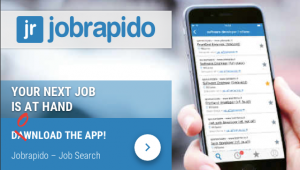Marketing tips to optimise your Mobile User Acquisition strategy
For more than 4 years here at TimeOne Mobile we optimize our campaigns, target criteria, plug only trusted sources and pursue an efficient anti-fraud policy to achieve the best performance on the campaigns.
The e-commerce vertical is familiar to us and we’ve put together some tips you can use to reach a killing performance on your e-commerce campaign.
1. Define your goals.

Are you sure that your mobile application is achieving your goal and receiving maximum post-install activity? – check your KPI!
Key Performance Indicator (KPI) is a value that helps to measure how your campaign is performing. Only correctly defined KPI can guarantee its effectiveness.
Checkpoint for your KPIs:
- Are they measurable?
Find out if the goals you are aiming for can be tracked and measured. As publishers can only influence and improve the performance of your campaign based on what they are able to track.
- Are they achievable?
Defining a KPI, you should realize that it is realistic and publishers will be able to influence to reach it. The issues related to ‘unreality’ of KPIs can be of two kinds:
- Check if your KPI require reasonable percentages in proportion to a number of installs. When launching a new application, getting 80% of sales in the first week is less likely to happen.
- Setting the KPI should be based on analysis of the organic traffic of your mobile application. Check how your organic users behave inside the app to draw a realistic portrait of what can be expected from your paid acquisition campaign.
- Are they relevant?
Make sure your KPI objectives are in line with your mobile application. Avoid setting values which don’t frame performance results. For example, any KPI linked to the privacy of the user like religion or ethnicity for a mainstream app would be irrelevant.
- Are they timed bound?
A clear sense of deadlines for achieving your KPI would greatly help to progress towards your goals. Clearly outline the period when you want to monitor the performance of your e-commerce campaign (e.g. week or month). This will help to optimize your campaign more effectively and ensure the KPIs are passed.
- Are they specific enough?
Defining a KPI may seem simple from the first sight, however, in practice, can become tricky and confusing for both: an advertiser and a publisher. Make sure the KPIs not only outline your desired objectives but also explain concrete rates of these objectives.
KPI that looks unspecific: ‘Advertiser is looking for in-app activity’
You would need to be more specific:
- What exactly is activity?
- What is the percentage of ‘activity’ in proportion to the number of installs?
Here at TimeOne Mobile, we have been working closely with Babbel on their IOS and Android application in Europe for more than a year. Before launching our first campaign, we agreed on a target CPA. From there, we defined a set of pos-install events, including registration, that helped us to reach and reduce the Babbel CPA target and overpass their volume expectation. Even more, thanks to a proper analysis of the KPIs, we can now predict the success of any new sources we onboard on the campaign.
Contact us or download our case study to know more about the Babbel case.
2. Is your campaign payout competitive enough?
You are free to establish the payout for your mobile application based on criteria such as:
- pricing model you want to promote it with (e.g. Cost-Per-Click; Cost-Per-Install; Cost-Per-Action)
- category of your application
- payout of your competitors.
- Your Customer Acquisition Cost
- Your KPIs
- Etc…
Note that you also need to consider the stage you’re at (are you looking for visibility or on-going activity?), because high-quality traffic is more expensive and that there are other app developers or brands competing for the same inventory.
3. Are you okay, banners?
There are two types of mistakes appearing with banners: technical and contextual.
- In terms of contextual issues, the most common one is the reliability of its message. For example, the banner contains outdated information about free downloading bonus of a betting app. Following this, the user clicks on the banner, uploads the app, however, does not commit any further action due to absence of promised bonus. As a result, the user only downloads the app, without performing any activity in there.
- Another contextual issue that often occurs is grammar mistakes.
 Some publishers may be focused only on conversion rates of the campaigns, and as a result might ignore such ridiculous issues as grammar mistakes in the banners or in the descriptions of the banners. Although, there are some cases, where smart publishers used the trick of posting silly errors in printed advertising for attracting audience attention intentionally, in the case of mobile apps promotion it will look ridiculous and can even deter users from clicking.
Some publishers may be focused only on conversion rates of the campaigns, and as a result might ignore such ridiculous issues as grammar mistakes in the banners or in the descriptions of the banners. Although, there are some cases, where smart publishers used the trick of posting silly errors in printed advertising for attracting audience attention intentionally, in the case of mobile apps promotion it will look ridiculous and can even deter users from clicking.
- Thirdly, the problem of banners can be associated with the language. Case example: Spanish language banners are used for targeting in Germany and German banners are used for Spain. Obviously, these campaigns will have extremely low conversion rates, as people are very unlikely to click on banners they do not understand.
- In terms of technical issues, there can be a problem of oversized format of creative. This can lead to the consequence, that your app will lose a part of installs, as some of the users might have a slow internet speed and your banner would not have enough time to upload.
4. Are your partners familiar with their job?
One of the primary keys to successful campaign is to be sure your offer is in the hands of professional. It is essential to building a partnership with a publisher, who will be responsible for the campaign during all its lifespan and not only during the time of its launching. Regardless of the fact that optimization technologies are accessible and ready to be used, only a part of agencies and networks follow them. That means that you will not be able to push the source what performed great and brought valid users that showed amazing rates of activity in the app and pause the source that sent a low-quality traffic.
In order to send the most qualitative traffic, TimeOne Mobile team optimize the campaigns on the daily basis. “It is on top of importance to care about the campaign during all its ‘lifespan’, paying special attention to the new source plugged on the campaign and doing extra push on the source that has already proved its traffic quality.” – Says Samuel, a Head of Account Managers Team at TimeOne Mobile.
Have some tips to share? Don’t hesitate to comment below.



